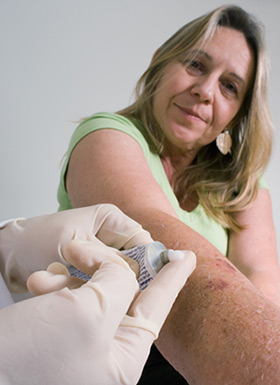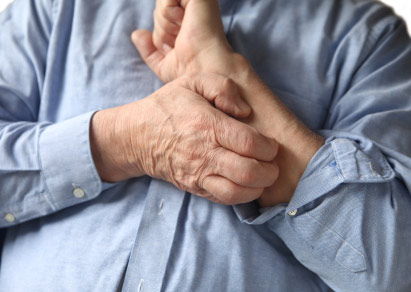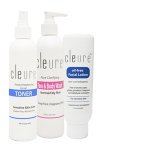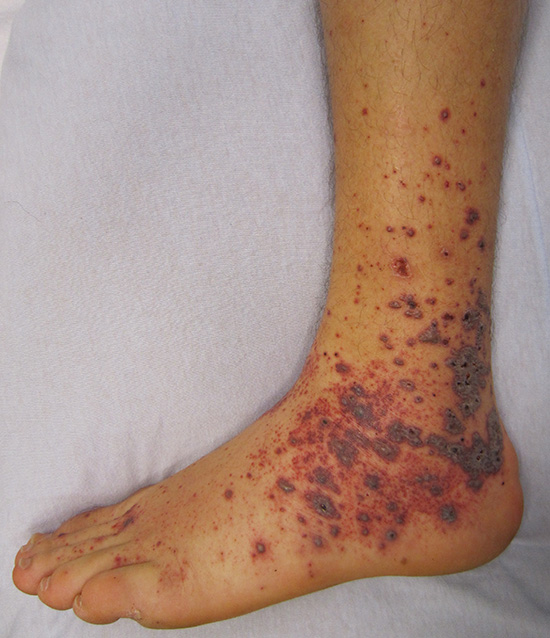Seborrheic Dermatitis
Tips for Clearing Sebhorreic
Dermatitis Naturally
What is Seborrheic dermatitis? You may have even had this condition without realizing it, as is a very common skin problem which usually affects your scalp, face, neck.
Sebhorreic dermatitis can also affect any part of your body where there are hair follicles and sebaceous glands.

These sebaceous glands excrete fat from your body as sebum, which makes your skin and hair feel oily or waxy.
If you have seborrheic dermatitis, affected areas of skin may be scaly, flaky, and itchy. It is very common among infants and is usually called “cradle cap”. In adults, dandruff is an early and mild symptom of seborrheic dermatitis.
In more severe cases, you might have red, flaky areas of skin around your nose and mouth, behind your ears, or other places where your skin folds. You can develop patches of scaly lesions and redness on your scalp, or crusty flakes can form around the shafts of your hair.
This skin condition is irritating for you, because something is irritating your skin and causing it to become inflamed. Knowing what and why can help you reduce your symptoms.
Potential Causes And Triggers of
Sebhorreic Dermatitis
Doctors have a hard time pinpointing a specific reasons that we develop seborrheic dermatitis, but many suspect the inflammation is a result of an imbalance of the sebum and yeast in your skin.
There is a type of yeast in your scalp called Malassezia. Scientists have been studying its relationship to both saturated and unsaturated fats in the sebum excreted through the skin of individuals with seborrheic dermatitis.
Their results have not been definitively conclusive, but there is a correlation that merits closer study.
It's possible their results have been mixed because there are so many unidentified variables associated with each and every case. Everyone is different, each person's body has a slightly different biological balance.
There is always a genetic component to your biological balance, so skin conditions often seem to be hereditary, but that doesn't mean there's nothing you can do about it.
You may have a genetic predisposition that causes your skin to have a certain reaction, but you can minimize some of the factors that your skin reacts to.
There may be environmental contributors, like products you use or foods you eat, which have an effect on your skin's sebum and yeast. Changes in weather, hormones, stress, or overall health can trigger symptoms of seborrheic dermatitis.
Virtually everything in and around your body has an impact on your biological balance, for better or for worse.
Typical Sebhorreic Dermatitis Treatments
Depending on the location and severity of symptoms, a doctor will usually recommend a combination of over-the-counter products or prescription medications.
Anti-dandruff shampoos and skin creams will usually contain one of these chemicals as the active ingredient for treating the symptoms of seborrheic dermatitis:
Selenium sulfide - An inorganic chemical compound that acts as an anti-fungal, reducing the growth of yeast in your scalp. OTC shampoos can only contain 1% of this chemical, while prescription shampoos contain 2.5%. It can discolor light or color-treated hair if you don't rinse it well enough.
Ketoconazole - A synthetic anti-fungal chemical that is used mostly in prescription-strength shampoos for fungal scalp infections and creams for athlete's foot and ringworm. Animal testing suggests it may affect the fetus of a pregnant woman using it. There is also evidence that it decreases testosterone in males. It can also cause liver damage.
Zinc pyrithione - A complex of zinc bonded with sulfur and oxygen, which has antibacterial properties. It is used in shampoos and creams for different types of dermatitis, as well as ringworm, athlete's foot, psoriasis, and dry skin. In May 2010, doctors at the University of Arizona Cancer Center published a paper stating that it may cause DNA damage in skin cells and lead to an increased risk of cancer.
Salicylic acid - A biosynthesized beta hydroxy acid, usually from an amino acid called phenylalanine. It is often used as a pain reliever and fever reducer, but is also an antiseptic and anti-inflammatory drug. Used in products to treat acne, psoriasis, dandruff, warts, corns, and calluses. Only 2% is generally allowed in products that you leave on your skin and 3% in those you wash off. Treated skin may be more susceptible to sunburn. In higher concentrations or on very sensitive skin it can cause a chemical burn. It should not be used on children. Sulfur is often added to Salicylic acid as an anti-fungal in shampoos.
Coal tar - A tar made from coal, as you might imagine! It is used in over-the-counter products for treatment of psoriasis and other scalp or skin problems, in concentrations anywhere between 0.5% and 5%. Chemicals in coal tar can vary depending on where it came from and what type of coal was used to make it. The National Psoriasis Foundation estimates it can contain 10,000 different chemicals, only half of them have been identified.
Corticosteroids - Topical steroids are often prescribed for various skin problems including most types of dermatitis, even for infants and children. These steroids have a long list of possible side effects, including contributing to the development of diabetes and osteoporosis. Even though it's used to treat dermatitis, a topical steroid can cause an allergic reaction called contact dermatitis. It can also lead to fungal or bacterial infections, yet can still be prescribed for seborrheic dermatitis which is linked to yeast.
If you have sensitive skin, and most people with dermatitis do, you may be a little nervous about trying these typical treatment products. Unless you try them, it's hard to tell how your skin will react.
Natural Treatments for Sebhorreic Dermatitis
Even natural products can irritate sensitive skin, so you should be careful when trying home remedies and natural treatments for seborrheic dermatitis as well.
Tea tree oil - From a species of malaleuca trees in Australia, which indigenous people have found numerous medicinal applications for. It has antiviral, antiseptic, antibacterial, and anti-fungal properties. In shampoo, 5% tea tree oil is sufficient to treat symptoms of dermatitis on the scalp.
Apple cider vinegar - A highly acidic vinegar made from apple cider is used in many home remedies for different ailments. It can be diluted in water, generally 1 part ACV to 10 parts water, and rubbed into the scalp for a few minutes then rinsed. For babies with cradle cap, you can use a cotton ball to apply it and gently rub the scalp.
Lime juice - Also very acidic, this remedy may be less effective by itself. You can use it after another treatment to get rid of any unpleasant odor and revitalize your hair.
Olive oil - A common remedy for babies with cradle cap, which adults can try also. Just apply it to the scalp and wait about 20 minutes, this will soften affected areas of the scalp so you can easily remove flakes or crusts with a comb. You can use shampoo afterward, you might want to clean the length of your hair and avoid rubbing shampoo into your scalp.
Baking soda - Another very popular home remedy with many uses. You can mix a couple tablespoons of baking soda with water to create a paste. Massage the paste into your scalp and leave it for a few minutes before rinsing.
Probiotics - Supplements that increase healthy bacteria in your body and improve your immune system. It's a good idea to take these any time you have to use antibiotics or antibacterial products, because good bacteria gets eliminated along with the bad bacteria.
Generally, you can use any of these as seborrheic dermatitis treatments once or twice a week. There are some natural shampoo recipes online, which use a variety of herbs and oils.
When you have very sensitive skin though, it's not a good idea to combine many different things unless you already know how your skin will react to them.

Preventing Flare-ups
Since there are so many factors that can contribute to flare-ups of dermatitis, treating the symptoms can be an ongoing process.
Any of the treatments mentioned here can help alleviate symptoms for a while, but none of them are likely to cure dermatitis. In order to prevent future inflammation, you can try to determine what some of the triggers may be.
Some triggers may be products that you use at home, such as hair products, detergents, fragrances, cosmetics, or even fabrics you wear. Other triggers can be work-related and you may not be able to avoid them as easily.
Prevention Tip #1 - A Simple Way to Reduce Stress
on Your Skin
If you have sensitive skin, there are any number of ingredients that could trigger a flare up of sebhorreic dermatitis. For this reason, we recommend that you simplify your personal care routines, and use hypoallergenic products for your skin, hair, and body.
Unfortunately, most people don't realize that most popular brands of hypoallergenic products can contain irritating ingredients such as parabens and fragrances which can trigger flare ups! Please see our hypoallergenic products section for more information about this.
In my search to find hypoallergenic products that do not contain potentially irritating ingredients, I've only managed to find one brand of paraben free hypoallergenic products that meets my stands, that contains no chemical irritants and also has no plant allergens.
Prevention Tip #2 - Clear Sebhorreic Dermatitis
from Within
Your diet plays a very important role in how your skin looks, especially since seborrheic dermatitis is related to sebum and yeast. Reducing excessive fats and sugar in your diet can have a positive effect on skin problems and may help prevent dermatitis symptoms.
Although it may feel impossible in today's stressful world to imagine living without sweets, there are new and healthier alternatives that will help keep your body balanced and your skin clear. Natural sweetners like Stevia and Xylitol can sweeten foods and will not contribute to yeast overgrowth in your body.
Overgrowth of yeast in your body could be contributing to the yeast in your scalp and skin, so reducing yeast in your diet (found in most breads) can help prevent symptoms. Sugars and simple carbohydrates promote the growth of yeast, whereas fiber-rich vegetables and whole grains will help healthy bacteria to grow and flourish.
Keeping your skin condition under control can require some minor lifestyle changes, but it does pay off. Symptoms of seborrheic dermatitis are external signs of an internal imbalance, regaining that balance will improve your health overall.
Home > Seborrheic Dermatitis









New! Comments
Share your thoughts about what you just read! Leave me a comment in the box below.